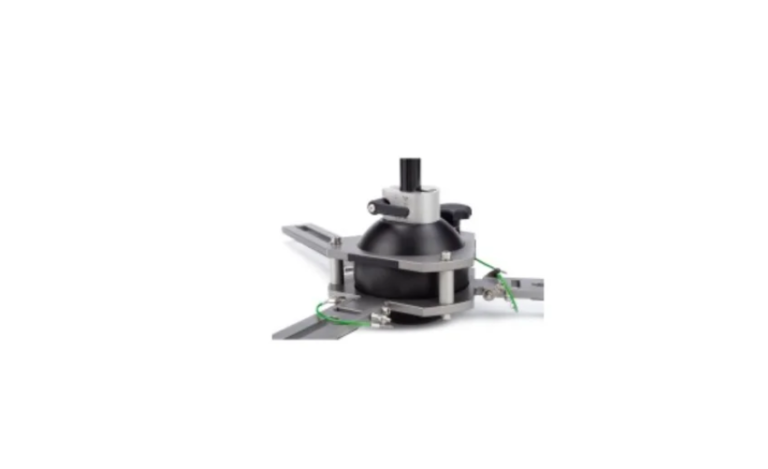
In the automotive world, tire health is a critical aspect that directly influences vehicle performance, safety, and longevity. One of the most concerning issues that can arise in tires is pitting, a condition that can significantly impair their effectiveness. The VT1000, a state-of-the-art tire inspection device, plays a vital role in detecting and assessing this condition. In this comprehensive article, we will explore the concept of VT1000 Pitting: What You Need to Know About Tire Condition, its causes, implications, and how to effectively monitor tire condition to ensure a safe driving experience.
Understanding VT1000 Pitting
Definition of VT1000 Pitting
VT1000 pitting refers to the formation of small, crater-like depressions on the surface of tires, identifiable through the advanced imaging technology of the VT1000 device. This condition can occur due to various factors such as wear and tear, environmental exposure, improper maintenance practices, and road conditions. Understanding pitting is essential for maintaining tire safety and performance, as it can lead to compromised traction and increased risk of accidents.
The Importance of Tire Condition
Tires are the only contact points between a vehicle and the road, making their condition crucial for safe driving. Regular inspection of tires is essential to prevent issues that can lead to accidents, blowouts, and decreased vehicle performance. The VT1000 provides valuable insights into tire condition by detecting pitting and other forms of damage, ensuring that vehicle owners can take appropriate action to maintain safety.
Causes of VT1000 Pitting
1. Wear and Tear
As tires accumulate mileage and age, they naturally undergo wear and tear. This deterioration can manifest as pitting, particularly in high-usage vehicles. Regularly using the VT1000 helps identify such issues early, allowing for timely interventions that can prevent further damage.
2. Environmental Factors
Tires are exposed to various environmental conditions, including UV rays, ozone, and extreme temperatures. These elements can deteriorate the rubber compounds in tires, leading to the formation of pits. The VT1000 plays a crucial role in detecting these changes, helping users understand how environmental factors contribute to tire health.
3. Improper Inflation
Both under-inflation and over-inflation of tires can cause uneven wear, leading to pitting. Maintaining optimal tire pressure is essential for preventing this condition. Regular monitoring with the VT1000 ensures that tires are properly inflated, reducing the likelihood of damage due to inflation issues.
4. Road Conditions
Driving on poorly maintained or rough roads can accelerate tire wear and contribute to pitting. The VT1000 serves as a proactive measure for assessing tire condition, particularly for vehicles frequently used on challenging terrains. By utilizing the VT1000, drivers can identify potential problems early and take corrective action.
The Role of VT1000 in Tire Inspection
How the VT1000 Works
The VT1000 employs advanced imaging technology to scan tire surfaces, capturing detailed images that highlight any irregularities, including pitting. The inspection process typically involves:
- Scanning: The VT1000 scans the tire while the vehicle is stationary, ensuring a comprehensive assessment of the surface.
- Image Capture: High-resolution images are taken, focusing on areas of concern such as pitting.
- Analysis: The images are analyzed to determine the extent of any damage, allowing for informed maintenance decisions.
Benefits of Using the VT1000
- Detailed Inspection: The high-resolution imaging capabilities of the VT1000 provide a thorough examination of tire surfaces, making it easier to identify pitting. This level of detail is essential for assessing tire health accurately.
- Immediate Feedback: Users receive instant results, enabling quick decisions regarding tire maintenance or replacement. This immediacy can prevent minor issues from escalating into significant safety concerns.
- Comprehensive Reporting: The device can generate detailed reports that help track tire health over time. These reports are invaluable for both fleet managers and individual vehicle owners, providing a clear picture of tire condition and maintenance history.
Interpreting VT1000 Pitting Images
What to Look For
When reviewing VT1000 pitting images, it’s essential to pay attention to several key factors:
- Depth of Pitting: Deeper pits indicate more severe wear and may require immediate attention. Analyzing the depth of pitting can help prioritize maintenance efforts.
- Distribution: Assess whether pitting is uniform across the tire or concentrated in specific areas. Understanding the distribution can provide insights into wear patterns and the need for tire rotation or replacement.
- Surface Condition: Look for accompanying signs of deterioration, such as cracking or bulging, which can indicate broader issues. Identifying these signs early can prevent more severe problems from developing.
Taking Action Based on VT1000 Findings
- Routine Maintenance: If minor pitting is detected, regular maintenance and tire rotation may suffice. Keeping an eye on tire condition can extend their lifespan and enhance safety.
- Professional Inspection: If severe pitting is noted, it may necessitate a professional evaluation to assess the tire’s overall condition. Consulting with a tire expert can provide additional insights and recommendations.
- Replacement: In cases of extensive pitting or other significant wear indicators, replacing the tires is critical for safety. Delaying tire replacement can lead to dangerous driving conditions.
Best Practices for Maintaining Tire Condition
To prevent VT1000 pitting and ensure tire longevity, consider implementing the following best practices:
- Regular Inspections: Conduct tire inspections every month, utilizing the VT1000 to catch issues early. Regular checks can help identify pitting before it becomes a more significant problem.
- Proper Inflation: Maintain the recommended tire pressure to avoid uneven wear and potential pitting. Use a reliable tire pressure gauge to ensure that tires are correctly inflated.
- Rotate Tires: Regularly rotating your tires promotes even wear, as informed by VT1000 assessments. Tire rotation helps extend the life of all four tires by distributing wear more evenly.
- Alignment Checks: Ensure that your vehicle’s alignment is correct to prevent uneven tire wear. Misalignment can lead to excessive wear on specific areas of the tire, contributing to pitting.
- Driving Habits: Adopt smoother driving habits to minimize tire stress, which can lead to pitting. Avoid aggressive acceleration and hard braking, as these behaviors can increase tire wear.
The Impact of VT1000 Pitting on Safety
Reduced Traction
Pitted tires can significantly reduce traction, especially in wet or slippery conditions. This compromised grip can lead to longer stopping distances and reduced control over the vehicle, increasing the risk of accidents. Regular monitoring with the VT1000 is essential to maintain optimal tire performance.
Increased Vibration
Pitting can create an uneven surface that leads to vibrations while driving. These vibrations not only affect comfort but can also impact vehicle control. By using the VT1000, drivers can identify and address pitting before it leads to more serious handling issues.
Compromised Structural Integrity
Severe pitting can weaken the overall structure of the tire, increasing the likelihood of blowouts. Regular assessments with the VT1000 ensure that any critical issues are addressed promptly, maintaining the safety of the vehicle. The cost of neglecting tire health can far exceed the cost of routine inspections and maintenance.
Case Studies: Real-World Applications of VT1000 Pitting
Fleet Management
For fleet operators, maintaining tire health is essential to ensure the safety and efficiency of their vehicles. By utilizing the VT1000, fleet managers can:
- Track Tire Condition: Regular assessments using VT1000 pitting images allow fleet managers to monitor the condition of each vehicle’s tires and schedule maintenance accordingly.
- Reduce Downtime: Proactively addressing tire issues can prevent breakdowns, minimizing downtime and keeping operations running smoothly. This proactive approach can lead to significant cost savings.
- Improve Safety: Regular tire inspections help ensure that all fleet vehicles operate safely, reducing the risk of accidents. This commitment to safety can enhance the company’s reputation and reliability.
Personal Vehicle Maintenance
Even for individual drivers, the benefits of using the VT1000 for tire inspections are substantial. By routinely checking tire health, drivers can:
- Make Informed Decisions: Access to detailed assessments enables drivers to decide when to replace tires based on actual condition rather than estimates. This informed approach can prevent unnecessary expenses.
- Enhance Road Safety: Regular monitoring helps prevent tire-related accidents, contributing to safer driving experiences. Prioritizing tire health is a straightforward way to increase overall road safety.
Limitations of the VT1000
Not a Standalone Solution
While the VT1000 is an invaluable tool, it should not be the only method used for tire assessment. Complementary practices include:
- Visual Inspections: Regularly checking for visible damage or foreign objects lodged in the tread is essential. A comprehensive approach to tire maintenance involves both technology and human observation.
- Professional Evaluations: Seeking professional help for comprehensive tire evaluations is important, as the VT1000 may not detect internal issues that could compromise tire safety.
Dependence on User Knowledge
The effectiveness of the VT1000 depends on the user’s ability to operate the device correctly and interpret the results accurately. Proper training and understanding of tire health are necessary to maximize the benefits of using the VT1000.
Conclusion
Understanding VT1000 pitting is crucial for maintaining tire health and ensuring vehicle safety. By regularly inspecting tires and being aware of the signs of pitting, drivers and fleet managers can take proactive steps to address issues before they escalate. The VT1000 serves as an essential tool in this process, offering detailed insights into tire conditions that significantly impact performance and safety.
Incorporating regular tire inspections into your vehicle maintenance routine can save time, money, and potentially prevent accidents on the road. By staying informed and vigilant about tire health through VT1000 assessments, you can ensure a safer and more enjoyable driving experience.







